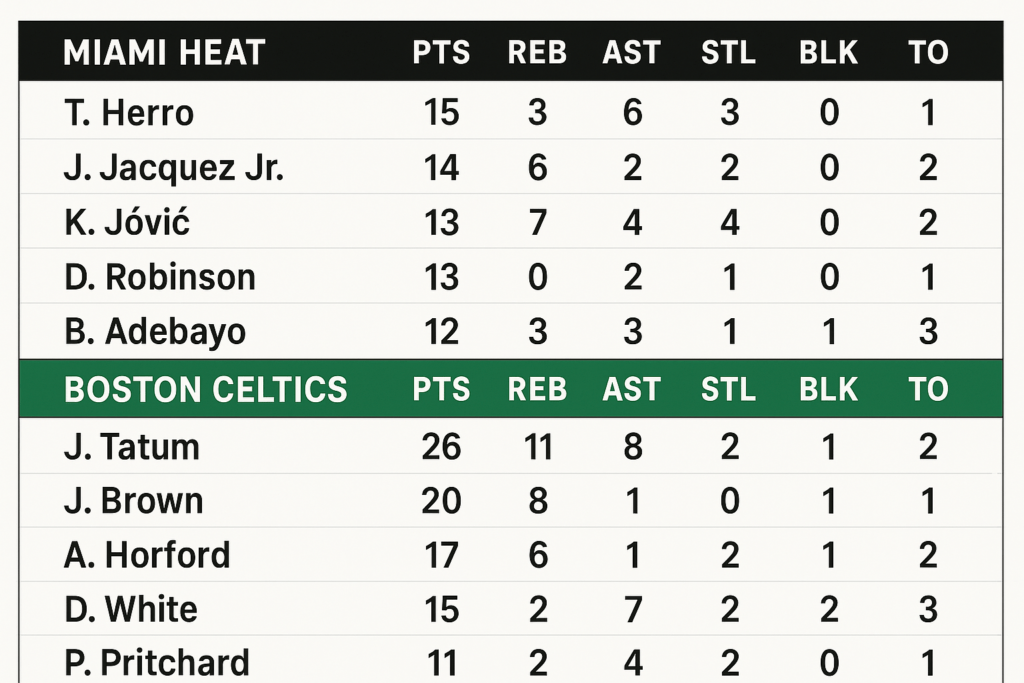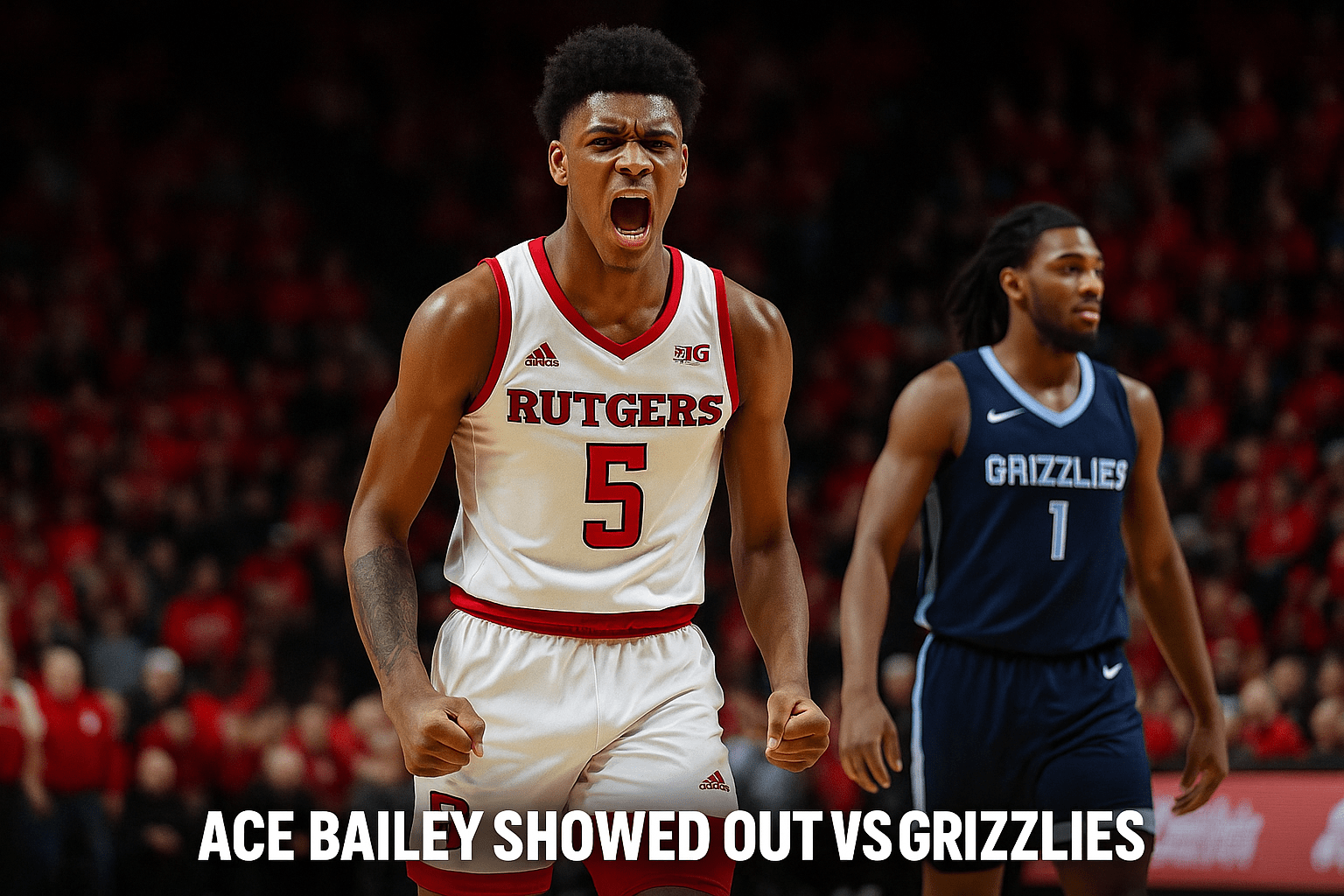There was a tension in the air the moment the Miami Heat stepped onto the parquet floor of TD Garden. The Celtics crowd roared like a brewing storm, and the Heat, used to the chaos, looked unmoved. But anyone watching closely could tell—it wasn’t just another game. It was a battle of heartbeats, of history, and more importantly, of execution. To understand how it all unfolded, we turn to the Miami Heat vs Boston Celtics match player stats, which tell more than just who scored the most points.
The Emotional Undercurrent of a Rivalry
The story between these two runs deeper than most rivalries in the league. There’s history. There’s redemption. And above all, there’s pride. The Celtics came into the game looking to reassert dominance on their home turf, while the Heat, shaped by grit and galvanized by experience, had no intention of backing down.
Looking at the Miami Heat vs Boston Celtics match player stats, it wasn’t just a matter of numbers. It was about how those numbers came to be. Jayson Tatum might’ve dropped 32 points, but each one felt like a struggle through Miami’s defensive web. On the flip side, Jimmy Butler’s 27 came with calm defiance—pull-up jumpers when the clock threatened, baseline drives that silenced boos, and those signature mid-range daggers.
Stats That Spoke Louder Than the Scoreboard
A glance at the stat sheet tells one story. A deeper look reveals layers.
Bam Adebayo: 19 points, 14 rebounds, 4 assists. What it doesn’t show? The way he denied Robert Williams at the rim twice in the final minutes. Or how he boxed out three green jerseys to secure a loose rebound that turned into a Duncan Robinson corner three.
Jaylen Brown: 25 points on 9-of-17 shooting. Efficient. Explosive. But he also had 6 turnovers. Stats show the brilliance and the blemishes.
Kyle Lowry, often overlooked, registered just 8 points but was a +14 in plus-minus. It’s the hustle plays, the quick outlet passes, the controlled pace—the sort of things that don’t earn headlines but win moments.
Shifts in Momentum: The Story Behind the Runs
The third quarter told a story of momentum. Boston came out aggressive, knocking down four straight threes. Tatum, Brown, Horford—everyone was in rhythm. But then, as quickly as the fire ignited, it dimmed. Miami’s zone defense locked in. They contested every pass, every look.
Miami went on a 16-4 run to close the quarter, and it was during this stretch that the Miami Heat vs Boston Celtics match player stats began to shift. Steals turned into fast breaks. Adebayo hit a rare elbow jumper. And Max Strus, quiet till then, nailed back-to-back triples that turned the crowd into a wall of silence.
A Game of Grit: Defensive Impact Beyond the Box Score
One of the most understated aspects of the game was defense. You wouldn’t find it highlighted in a casual glance at the box score, but the Miami Heat vs Boston Celtics match player stats hide moments of magic on that end.
Gabe Vincent harassed Marcus Smart for four quarters. While Smart still managed 15 points, most came off tough looks and contested floaters. Vincent drew two offensive fouls, deflected three passes, and altered Boston’s rhythm.
On the Celtics’ side, Derrick White showcased his underrated perimeter defense. Tyler Herro, often a scoring spark, was held to just 10 points, struggling to find clean looks against White’s long arms and quick feet.
The Crunch-Time Breakdown: Every Stat Matters
Final five minutes. Tie game. This is where stats meet soul.
Butler took over. He hit a turn-around jumper over Tatum, drew a foul on Brown, and assisted a Strus three from the wing. All of this while keeping pace on defense, switching onto Brown and Smart as needed.
Meanwhile, Boston struggled to convert cleanly. A costly turnover by Horford, a missed open three by Tatum, and a 24-second violation—each moment becoming a data point in the Miami Heat vs Boston Celtics match player stats that revealed the weight of the moment.
What the Numbers Tell Us About These Teams
- Miami Heat: Resilient, strategic, unbothered by big moments.
- Boston Celtics: Talented, high-ceiling, but still figuring out the puzzle when pressure peaks.
The Heat had 22 assists on 34 made field goals. That tells us something: ball movement. Trust. Patience. Boston had more rebounds, but fewer fast break points, showing they often failed to convert opportunities quickly.
FAQs
Who was the top scorer in the Miami Heat vs Boston Celtics game?
Jayson Tatum led all scorers with 32 points, followed closely by Jimmy Butler with 27.
Which team had more turnovers?
Boston turned the ball over 16 times, compared to Miami’s 10—a crucial stat that reflected control.
What player had the highest plus-minus?
Kyle Lowry led the game with a +14 plus-minus, showing his unflashy but important impact.
Which bench unit was more effective?
Miami’s bench outscored Boston’s 34-22, with key contributions from Strus and Martin.
How did the three-point shooting compare?
Miami shot 39.5% from beyond the arc while Boston managed 33.1%.
Final Thoughts
Sometimes, stats lie. But not in this case. The Miami Heat vs Boston Celtics match player stats captured every heartbeat of a clash built on rivalry and respect. It was a game that balanced strategy and spontaneity, where every steal mattered, every rebound had weight, and every decision under pressure shaped the story.
When the buzzer sounded, it wasn’t just a win for Miami or a loss for Boston. It was a chapter added to a rivalry that never ceases to deliver. And the numbers? They just helped us understand how it all happened.




